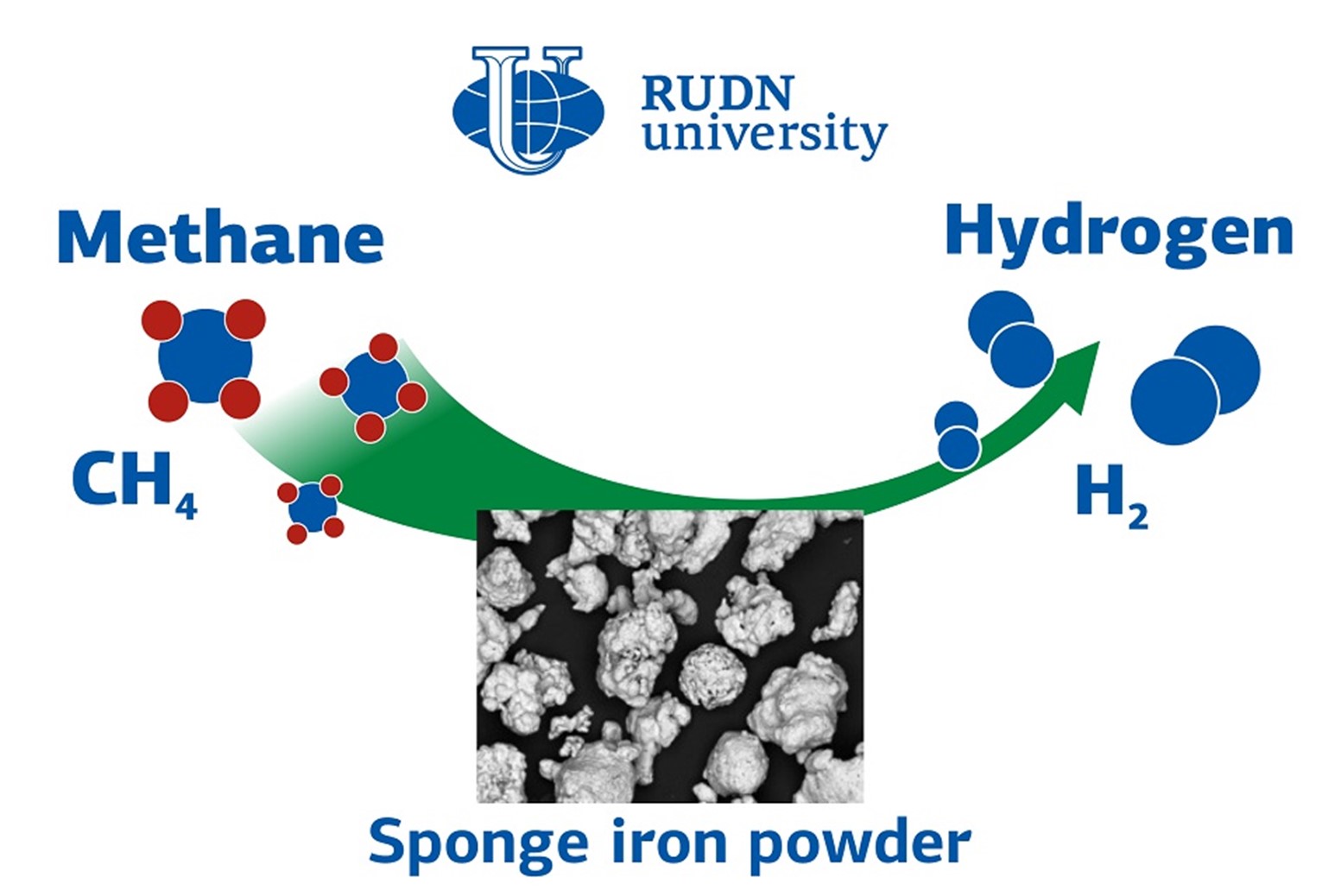RUDN ecologists obtained hydrogen fuel with the help of iron "sponge"

One of the well-known approaches of alternative energy is the use of hydrogen fuel. It is the most widespread element on Earth, and when burned, it gives three times more heat than gasoline. In addition, the product of hydrogen combustion is ordinary water. Hydrogen can be obtained, for example, from natural gas — methane. To do this, methane is heated to temperatures above 1000 ℃. This process is called pyrolysis. PFUR scientists with colleagues from the Joint Institute of High Temperatures of the Russian Academy of Sciences, Graphic Era University (India), MISIS University of Science and Technology and Lukoil-Engineering have proposed a method that allows to achieve 85% efficiency of this reaction. An iron “sponge” is used for this purpose.
“Unlike hydrocarbon fuels, burning hydrogen does not release carbon dioxide into the environment. Therefore, the use of hydrogen instead of traditional fuels is of great interest due to the global demand for low-carbon energy development. Despite the relatively simple reaction equation, the methane pyrolysis process is still insufficiently technologically developed”, — Mikhail Vlaskin, PhD in Technical Sciences, Leading Researcher of the Department of Environmental Safety and Product Quality Management at RUDN.
Sponge iron was placed in a reactor tube 8 cm long, methane was fed at different rates (from 50 to 200 milliliters per minute). And a propane burner heated the reactor from 700 to 1100 degrees Celsius. Sponge iron played the role of a catalyst in the process. The hydrogen yield depended on the temperature and methane feed rate. At temperatures of 700-800℃, the efficiency did not exceed 20%. But at 1100℃, it reached 85%. Without sponge iron, the efficiency was 81% lower.
“This is the first time we have used sponge iron as a catalyst for methane pyrolysis. The next step is to determine whether this catalyst can maintain the reactivity over a long period,” Mikhail Vlaskin.
The results were published in the journal Results in Engineering.
RUDN summarized the results of the scientific competition "Project Start: work of the science club ". Students of the Faculty of Physics, Mathematics and Natural Sciences have created a project for a managed queuing system using a neural network to redistribute resources between 5G segments. How to increase flexibility, make the network fast and inexpensive and reach more users — tell Gebrial Ibram Esam Zekri ("Fundamental Computer Science and Information Technology", Master's degree, II course) and Ksenia Leontieva ("Applied Mathematics and Computer Science", Master's degree, I course).
The National Demographic Report, 2023 Demographic Well-Being of Russian Regions (hereinafter - the National Demographic Report) was prepared by the scientific team of the Institute of Demographic Studies of the Federal Research Center of the Russian Academy of Sciences, the Vologda Scientific Center of the Russian Academy of Sciences, Peoples' Friendship University of Russia, the Center for Family and Demography of the Academy of Sciences of the Republic of Tatarstan, as well as with the participation of leading scientists from the Republic of Bashkortostan, Stavropol Krai, Volgograd, Ivanovo, Kaliningrad, Nizhny Novgorod, Sverdlovsk Oblasts and Khanty-Mansi Autonomous Okrug–Yugra.
RUDN summarized the results of the scientific competition "Project Start: work of the science club ". Students of the Faculty of Physics, Mathematics and Natural Sciences have created a project for a managed queuing system using a neural network to redistribute resources between 5G segments. How to increase flexibility, make the network fast and inexpensive and reach more users — tell Gebrial Ibram Esam Zekri ("Fundamental Computer Science and Information Technology", Master's degree, II course) and Ksenia Leontieva ("Applied Mathematics and Computer Science", Master's degree, I course).
What is your first association with the word “laboratory”? Flasks and beakers? Microscopes and centrifuges? Yes, many of us would answer the same way.
The National Demographic Report, 2023 Demographic Well-Being of Russian Regions (hereinafter - the National Demographic Report) was prepared by the scientific team of the Institute of Demographic Studies of the Federal Research Center of the Russian Academy of Sciences, the Vologda Scientific Center of the Russian Academy of Sciences, Peoples' Friendship University of Russia, the Center for Family and Demography of the Academy of Sciences of the Republic of Tatarstan, as well as with the participation of leading scientists from the Republic of Bashkortostan, Stavropol Krai, Volgograd, Ivanovo, Kaliningrad, Nizhny Novgorod, Sverdlovsk Oblasts and Khanty-Mansi Autonomous Okrug–Yugra.